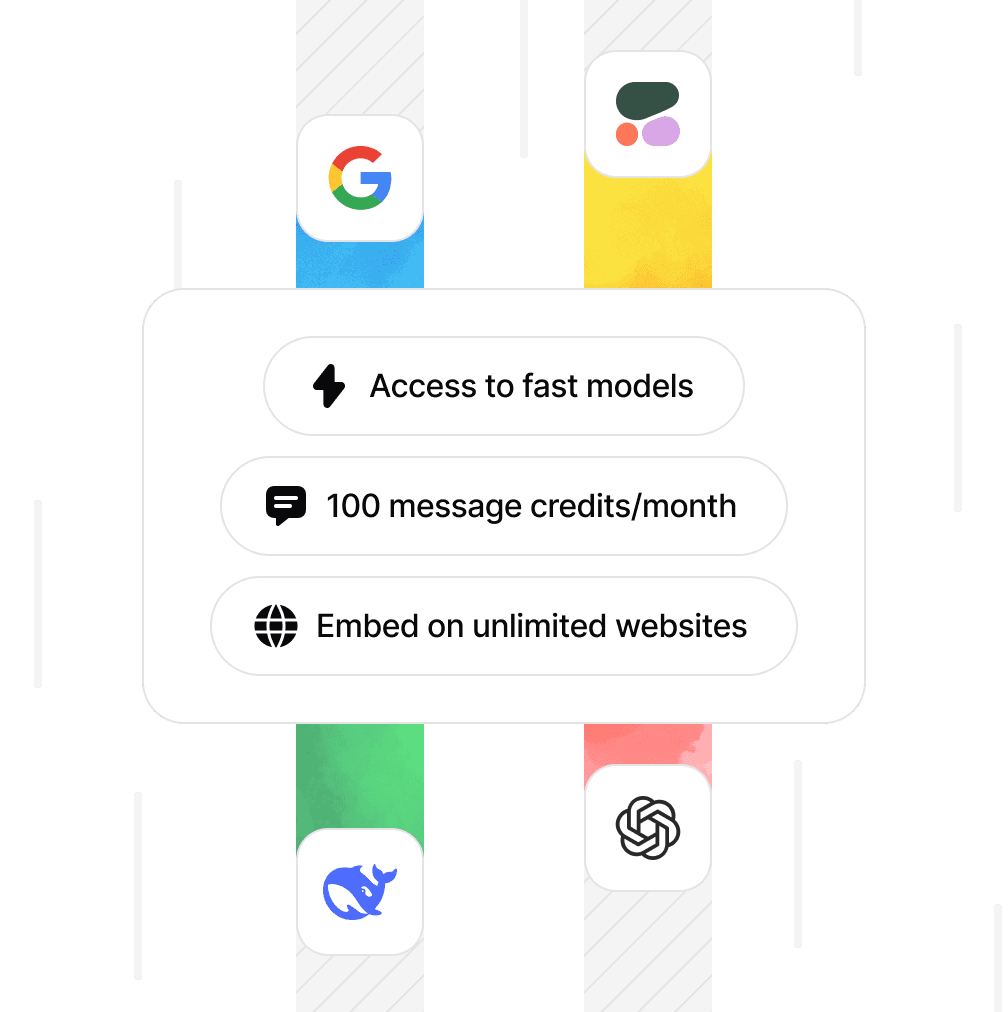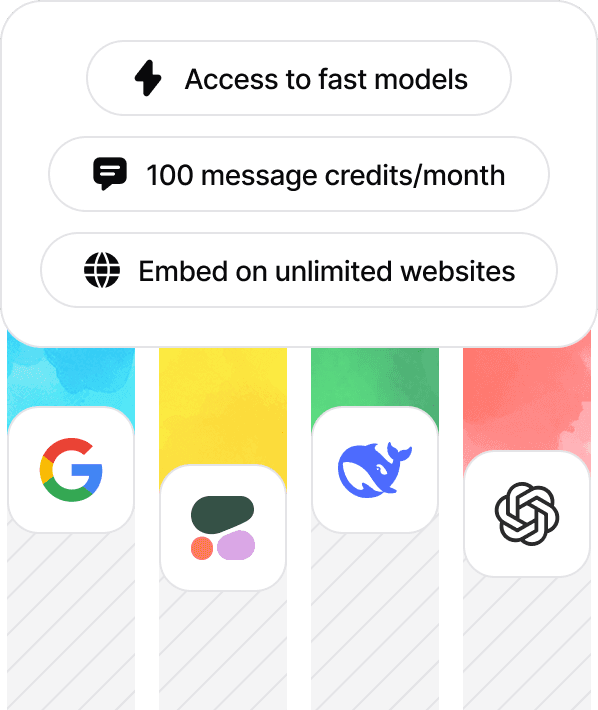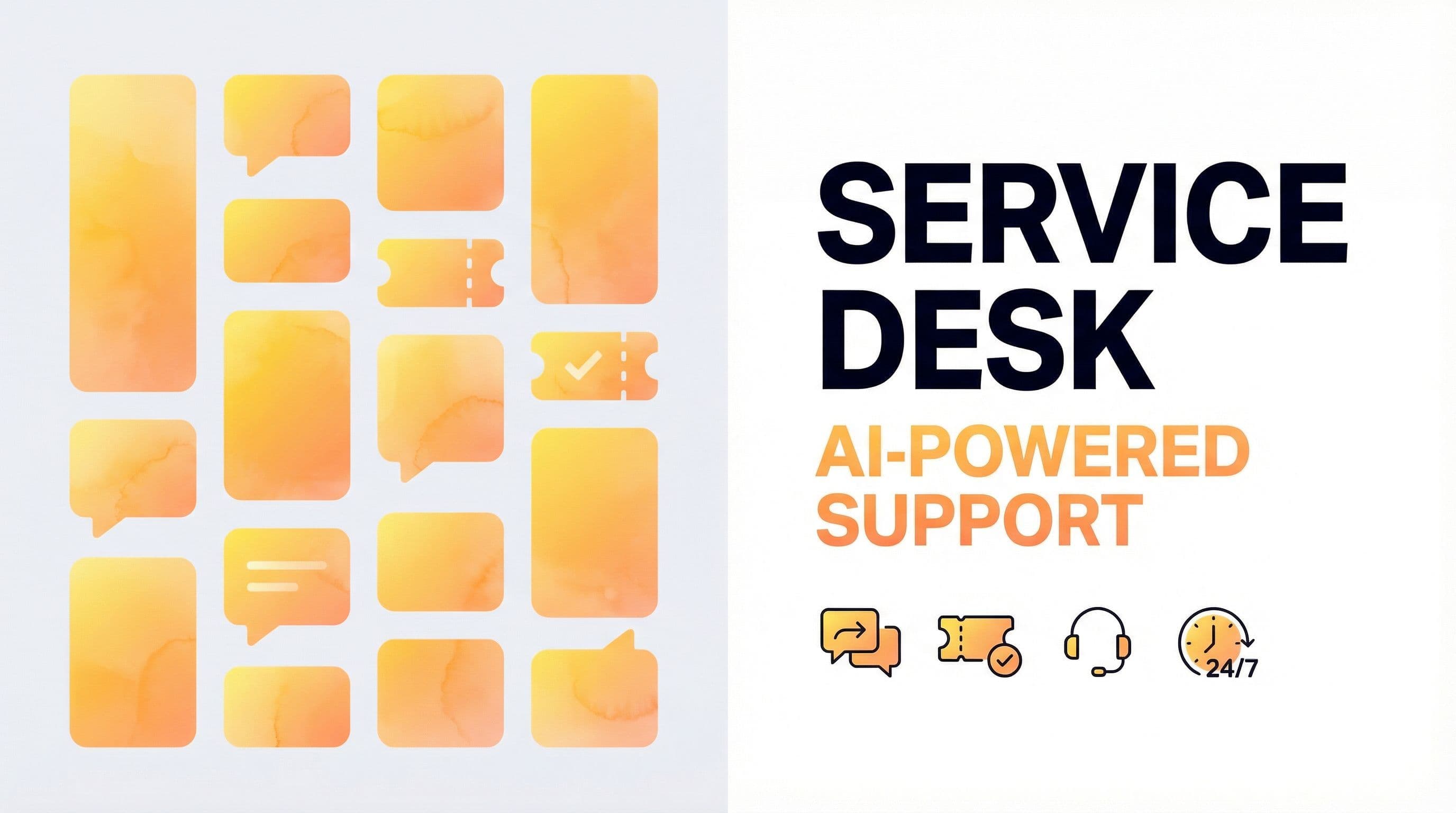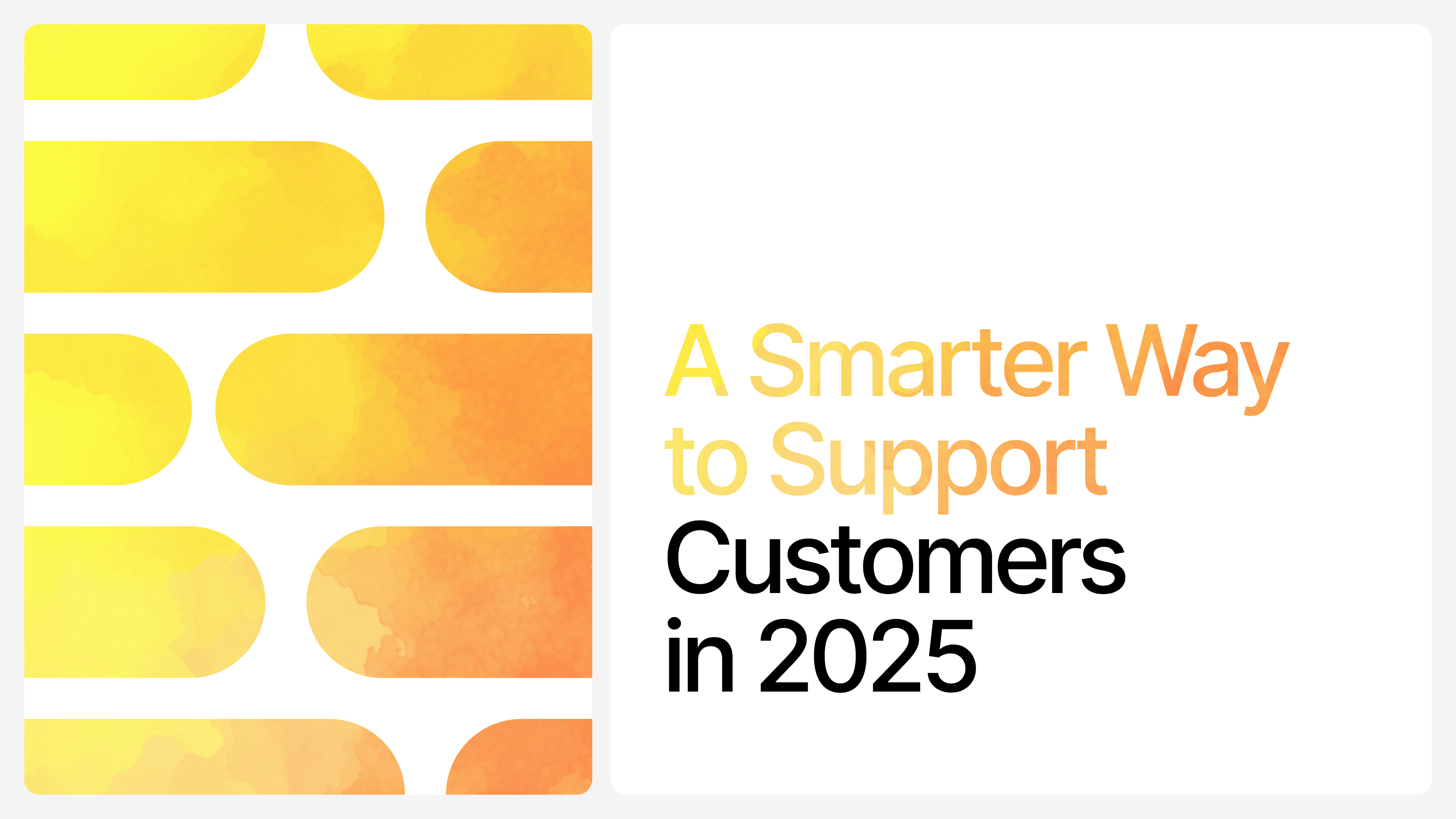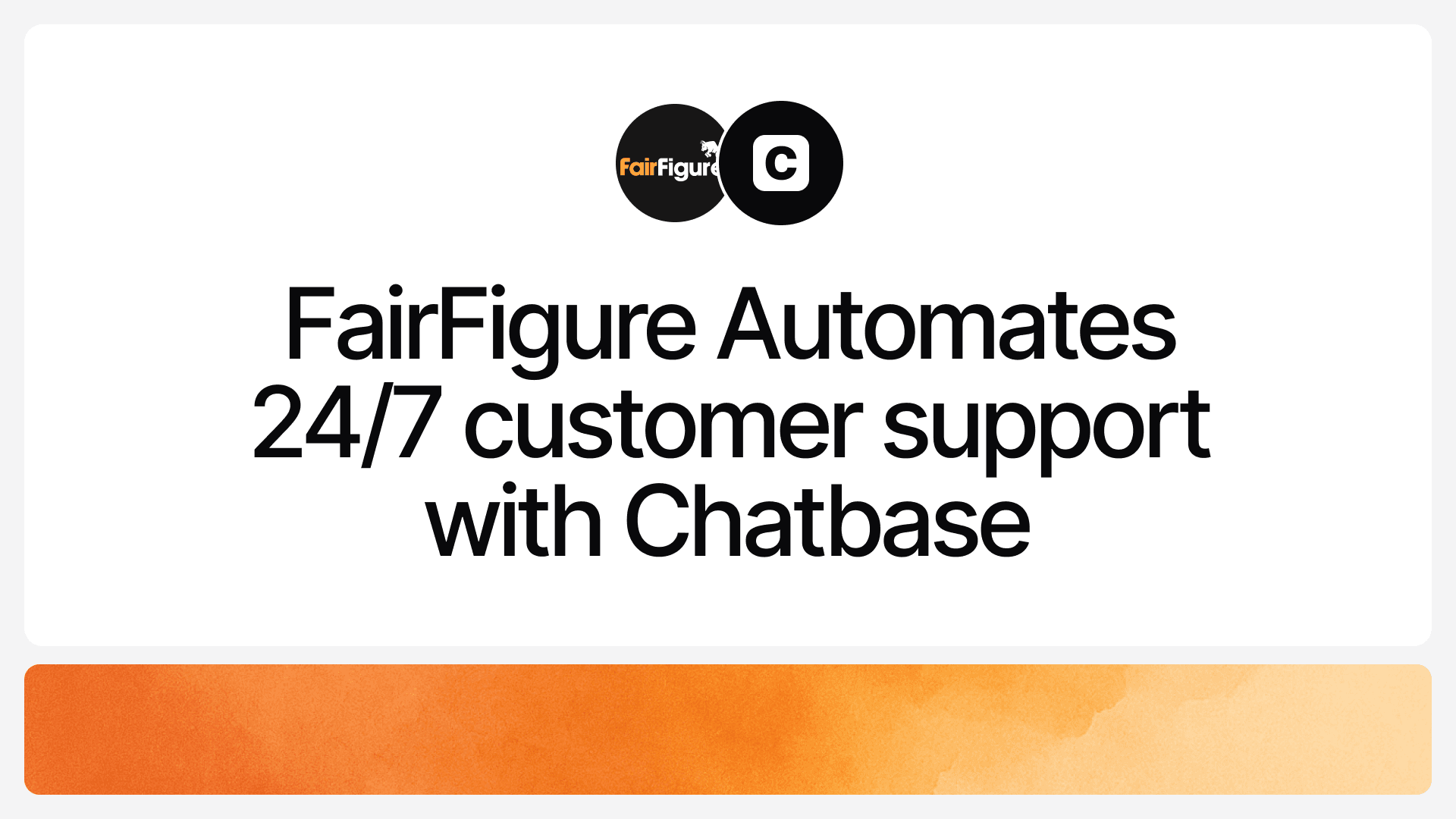How to Use Chatbots to Improve Customer Engagement
Max T
Dec 16, 2023
10 min read

In November 2022, OpenAI released a chatbot that would forever change the global technology landscape.
Called ChatGPT, the AI chatbot rapidly rose to fame, renewing a fading interest in chatbots—a group of software that simulates human conversations using natural language.
Since then, chatbots have become one of the most talked about technologies of recent times.
Chatbots, especially today's sophisticated AI-driven models, have rapidly become very useful and sometimes indispensable in many fields.
From education, gaming, and healthcare to finance, travel, and agriculture, chatbots are helping automate tasks and driving efficiency.
Consequently, it comes as no surprise that chatbots are making a huge difference in another important field: business.
Chatbots have a rich history in business and customer service.
When personalized to suit your specific business, chatbots can significantly improve customer engagement and drive customer satisfaction, brand loyalty, and profit.
You're missing out if you're not using chatbots to boost customer engagement to improve your business.
If you are still unsure how much chatbots can practically impact your business, let the stats speak for themselves:
Chatbot Customer Engagement Statistics
- According to Statista, over half (54%) of customers believe chatbots effectively resolve their complaints, with one-third finding chatbots "very effective." With a good chatbot on your company's website, you're assured of favorable resolution rates for customer complaints.
- According to research by Drift, close to 90% of chatbot users report either a positive or neutral experience. This indicates that thoughtfully implemented chatbots rarely disappoint customers, and are highly likely to bring a positive experience to your business .
- Employing chatbots over traditional support systems can save up to 30% in customer support costs, according to research by IBM. Using chatbots can help you free up some funds for other customer-focused initiatives or even charitable efforts, contributing to the $557.2 billion in total giving recorded in 2023.
- 40% of customers prefer chatbots over human agents, per data from Insider Intelligence. If your website doesn't have a chatbot, you may be losing customers to competitors that do.
- Around 40% of customers don't care whether they talk to a chatbot or a human agent as long as their problems are resolved, per data from HubSpot. Again, this highlights an opportunity for businesses to utilize chatbots without fear (of backlash by customers) to resolve simple and common customer issues efficiently and at scale, freeing up human agents for more complex engagements.
Now that we’ve seen the data, let's look at how chatbots can help your business grow through improved customer engagement.
Chatbots Benefits for Customer Engagement
As the saying goes, happy customers are repeat customers.
With a chatbot, you can bring a new level of customer engagement to your business and build customer loyalty.
Here are four ways chatbots can help you drive customer engagement with your brand and business:
24/7 Support
It’s midnight, and your customer support agents are already off for the day.
However, your customers can encounter an issue at any time and want you to be available to help.
Chatbots can step in while human agents are off duty, helping provide 24/7 support by being available around the clock.
Even when the chatbot does not entirely resolve the issues, it reassures the customer that the problem is being addressed. The idea of round-the-clock support can be a great way to build customer trust and confidence in your business.
They’ll be more likely to do business with you at any time of the day when they believe there will be help if something goes wrong.
Solve complaints faster
One of the biggest challenges of providing customer support is balancing the right balance between fast response times and meeting customer expectations.
After all, human agents are humans.
They’ll sometimes need time to review a few documents to resolve a customer issue.
So, a customer needs to rent a car from your car rental service for a family of three?
Human agents will need to go through a dozen pages of options and prices to find the best deal for you.
“Hold on while we check your account.” “I'm going to place you on a brief hold” “Hold on while I transfer you to the right agent.” “Hold on while I consult with my team on the best way to address this.”
These types of responses are standard especially when dealing with complex issues,
but they can sometimes frustrate your customers–frustrated customers are not good for business.
With chatbots, you can respond quickly to customers' questions without compromising on the quality of the response.
What could take a human agent minutes or hours to resolve can be resolved in seconds with a chatbot.
Personalized Engagement
Chatbots excel at delivering personalized experiences.
They can use the customer's information to match them to the right products and services in ways that may be more tailored than a human agent would typically do.
Based on a customer's information, you can program your chatbot to offer exclusive deals, personalized recommendations, loyalty rewards, proactive assistance and even design personalized gifts like custom clothes on the go.
This encourages repeat interactions and boosts user loyalty.
Speak Your Customer's Language
In today’s global market, catering to customers in their local language and cultural context can be crucial.
It could be a deciding factor for a customer to choose one brand over another.
Would English-speaking customers want to do business with a company that, say, uses only Mandarin or Spanish in customer service?
There’s a high chance of customers being less interested in your business if there are language and cultural barriers.
Chatbots can help bridge such barriers.
With the right chatbot, your business can attract and retain customers in their language.
This level of language and cultural personalization strengthens engagement and loyalty across your diverse customer base.
More so, customers who understand that you’re making efforts to cater to them in their preferred language will feel more seen, heard, and valued. These are all needed for customer loyalty.
Chatbots are no more gimmicks that you put on websites or communication channels to show off how technologically savvy your business is.
They offer real value to your business.
They help you solve customer problems, increase customer satisfaction, and cut customer support costs.
However, not all chatbots are made the same.
To pick the right chatbot for your business, it needs to meet some important criteria.
But what are these criteria? Let’s take a look at some of the most important criteria to consider when choosing a chatbot for your business:
How to Choose the Right Chatbot for Your Business
With so many options to choose from, making the right pick to match your specific business needs is key to seeing value.
Here are some of the most important things to consider when selecting a chatbot:
Ease of Deployment
Deploying and maintaining some chatbots can be resource-intensive, requiring substantial technical knowledge or money.
You may need a developer to build and deploy these complex chatbots. In contrast, more user-friendly "plug-and-play" chatbots are much easier to set up and run.
When choosing a chatbot platform, consider how long it will take to set up and the associated costs.
Time to set up chatbots can range from minutes to months depending on the platform complexity.
Simpler chatbots may only take a short time to purchase and implement, while more advanced ones require more effort. Carefully weigh the features you need against deployment demands. Complex chatbots capable of sophisticated conversations might demand more expertise to launch.
More lightweight chatbots offer faster setup but less customization. When choosing a chatbot, consider your goals, resources, and capabilities.
The right platform balances functionality and ease of use for your needs.
Type of Chatbot
You’ll generally find three types of chatbots in the market: older rule-based, modern AI-powered, and hybrid chatbots that combine both types.
The older rule-based chatbots require much manual effort to deploy and maintain.
They rely on a predefined set of rules to drive their responses and are limited in their ability to flexibly adjust to the customer's needs.
Modern AI-powered chatbots are intelligent, making them more capable and customizable.
They are adept at handling a wider variety of customer questions and scenarios and can be programmed to respond in a tailored manner depending on customer preferences.
Hybrid chatbots combine the best of both worlds, offering the simplicity of rule-based chatbots and the flexibility of AI-powered chatbots.
Free Trials
The best way to gauge the effectiveness of a chatbot platform is to test it out directly with target audience groups.
Many vendors offer free trials or demo accounts that allow you to validate conversational design and capabilities before financial commitments. Go for platforms that offer free accounts.
Deployment Channels
Good chatbots offer integration into some of the communication channels your customers are probably already using.
The right chatbot platform should be capable of supporting customer interactions on multiple digital platforms.
Common deployment channels include websites, messaging apps (such as Facebook Messenger, WhatsApp, or Slack), and mobile apps
Ensure that the chatbot you choose has flexible options for deployment.
Your Audience or Customer Base
When choosing a chatbot, you’ll need to factor in who your chatbot will be interacting with most.
Are you going to be dealing with potential leads researching products, existing customers placing orders, or prospective hires applying to open roles?
Defining your target audience will help you define the capabilities that your chatbot should have.
For example, if your chatbot is meant for existing customers placing orders, it should be able to take orders and provide product information.
If it is intended for customers making inquiries about your product, then a chatbot that can provide product descriptions that emphasize the strengths of the products that match the customer's needs might be the way to go.
Security Protocols
Customers engaging via chat often share personal information like email addresses, phone numbers, and sometimes even Social Security numbers.
Using a chatbot platform with excellent security infrastructure and encryption ensures users’ private data stays protected behind multiple layers of security. This is especially important when handling sensitive information, such as through tools like an SSN Validator, which require strict data protection standards.
Conversational Capabilities
Today's best bots go beyond answering simple questions to having intelligent dialogues that feel natural.
Test response time, contextual awareness, ability to handle complex questions, and sentiment analysis before making financial commitments.
Conclusion
When evaluating chatbot platforms, it can be a balancing act trying to find a chatbot that offers simplicity but with a lot of functionalities.
If you need a chatbot platform that balances usability, affordability, data security, intelligent conversations, integration flexibility, and personalization, we believe Chatbase is a great solution to consider.
Chatbase offers one of the most user-friendly "plug and play" chatbot setups in the market, allowing even novice users to have an intuitive chatbot interface launched in just minutes.
Set up your Chatbase chatbot in minutes
Despite its simplicity, Chatbase's capabilities rival those of more complex platforms that require lengthy development and training. It comes AI-powered out of the box to handle natural conversations.
The affordable pricing plans also start free for basic usage, making Chatbase financially viable even for smaller businesses on tight budgets.
Regarding channels for customer interactions, Chatbase provides broad cross-channel support for embedding on websites and integration with messaging apps like WhatsApp and Slack.
It gives you flexibility to engage your audience in their channel of choice.
Chatbase provides the best blend of essential chatbot capabilities while minimizing complexity.
Share this article:
